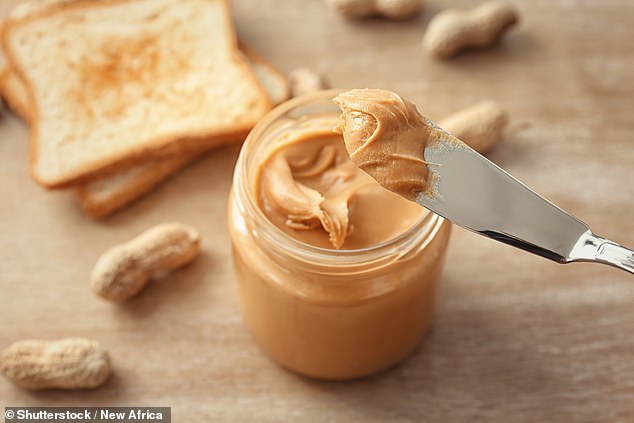Children with severe allergies have seen “life-transforming” results in the first trials using foods to build their immunity.
So far, five NHS hospitals have joined a £2.5 million clinical trial that is testing whether everyday food products, such as peanuts and milk, can be used as a treatment.
Experts said that while it is not a cure for extreme allergies, early results have found that immunotherapy has the potential to stop deaths and reduce hospitalizations from accidental exposure.
Sibel Sonmez-Ajtai, pediatric allergy consultant and principal investigator at Sheffield Children’s NHS Foundation Trust, said: “This study allows us to do something we would never have dreamed of doing before: giving patients foods we know they are allergic to.”
The research has been funded by the Natasha Allergy Research Foundation, set up in memory of Natasha Ednan-Laperouse, who died in 2016 (pictured). She suffered a severe allergic reaction to sesame baked in a Pret baguette she bought at Heathrow Airport.
‘This treatment is not a cure for a food allergy, but what it does is transform lives.
“For a patient who has suffered anaphylaxis with 4 ml of milk to tolerate 90 ml within six to eight months is nothing short of a miracle.”
The research has been funded by the Natasha Allergy Research Foundation, set up in memory of Natasha Ednan-Laperouse, who died in 2016.
The 15-year-old, from Fulham, west London, suffered a severe allergic reaction to sesame baked into a Pret baguette she bought at Heathrow airport.
The sandwich did not have any indication of allergens on its packaging because it was not required by law at the time, since it was made on the premises.

Researchers say early results have found that immunotherapy has the potential to stop deaths and reduce hospitalizations from accidental exposure.
Her parents, Nadim and Tanya Ednan-Laperouse, campaigned for a change in food laws and set up the foundation in the hope of curing allergies through research.
The oral immunotherapy (OIT) clinical trial uses everyday foods to build the allergic patient’s tolerance over time.
It runs at University Hospital Southampton NHS Foundation Trust, Imperial College Healthcare NHS Trust, University Hospitals of Leicester NHS Trust, Newcastle Hospitals NHS Foundation Trust and Sheffield Children’s NHS Foundation Trust.
It will soon begin in Scotland, with Bristol and Leeds also expected to join.
If successful, the three-year trial could provide further evidence to make the everyday foods treatment available on the NHS.
Thomas Farmer, 11, who was diagnosed with a severe peanut allergy when he was one, can now eat six peanuts a day after joining the trial in Southampton.
Her mum Lauren said: ‘Having food allergies can be really difficult and isolating… (but) our journey in Natasha’s studio has been amazing so far.
‘At first, both Thomas and we were really scared when he did the food challenge as we weren’t sure what to expect.
‘Knowing that Thomas can now tolerate six peanuts a day has relieved him of a lot of anxiety around food.
“Hopefully this will also mean you will be able to eat a wider variety of foods as we won’t be as worried about accidental exposure.”
“It’s incredible that Thomas can achieve all this without drugs, just with foods available on the market.”
Since joining the trial in Newcastle, five-year-old Grace Fisher, who has a milk allergy, now drinks 120ml of milk a day. Soon she will be able to eat pizza with her friends.
Her mother Emma said: ‘Grace has been on this journey for over six months and is doing brilliantly.
“He currently drinks 120ml of milk and loves his daily hot chocolates.”
To date, 139 people ages 2 to 23 with a peanut or cow’s milk allergy have started treatment, and full results are expected to be available in 2027.
In 2021, ‘Natasha’s Law’ was introduced, making allergy information a requirement for locally produced foods.
Mrs Ednan-Laperouse said: “We are very pleased that some children with peanut and milk allergies are already seeing the benefits of using everyday foods under medical supervision to treat their allergic condition.
‘If Natasha were alive today, this is exactly the type of investigation she would have loved to be a part of.
‘This is an important first step in our mission to make food allergies history. We look forward to seeing the final results.”


